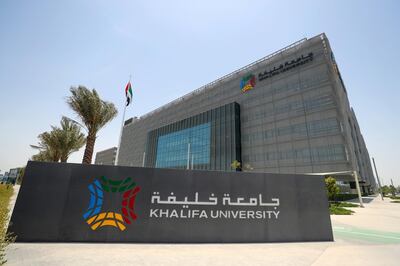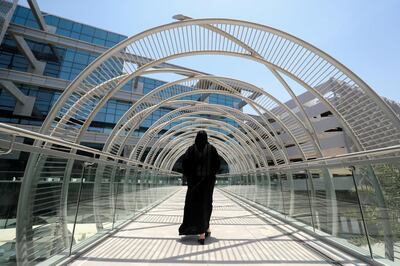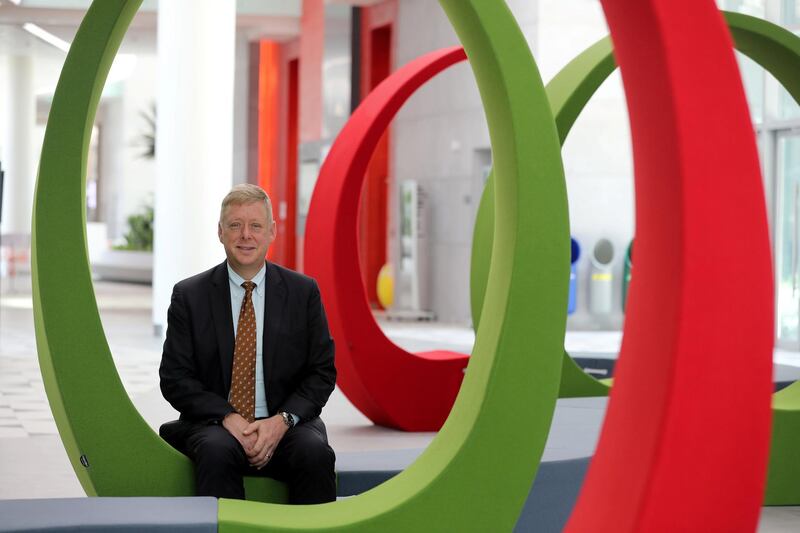When Dr Tod Laursen moved to the UAE eight years ago, Khalifa University consisted of just three main buildings and 600 students. But all of that was set to change.
Today, the vast campus is spread over 140,000 square metres, includes a brand new medical school, and boasts some 4,000 students. And the expansion looks set to continue.
But for the man behind much of the startling metamorphosis, however, the time has come to leave the Emirates for pastures new.
At the end of this month Dr Laursen plans to return to his native America, although he leaves behind a remarkable legacy.
"When I first came to Khalifa University I was impressed by the ambitious vision of a campus that wanted to be world-class," he told The National.
"For me it was a little bit of a leap into the unknown but it was an exciting vision. I don’t know if I'll ever get the chance to do something like this again."
Last year, Khalifa University - the country's youngest public university - was formed following the merger of Masdar Institute of Science and Technology, the Petroleum Institute and Khalifa University of Science, Technology and Research (Kustar).
As a result Dr Laursen changed roles from being the president of Kustar to becoming responsible for the entirety of the newly formed, single university.
Reflecting on the merger, he revealed his immediate challenge was to create a different model of education in the UAE that would bear international scrutiny.
He said global recognition and reputation was key if the new campus was to compete effectively long-term.

“When you set out to create a research university that can compete with the West or a faculty that can compete with the rest of the world, it’s different from a campus that concentrates on teaching," Dr Laursen said.
"There was recognition that critical mass was important in order to establish a university with a world-wide reputation.
"It's essential to have a certain number of faculty, research and student numbers to qualify for global rankings.
"In government, you're used to universities that deal with teaching first and foremost but our challenge was to get people to imagine what we were hoping to create.
"I think the leaps we achieved after the merger bear that out."
______________
Read more:
Abu Dhabi's first medical school set to open this year
Abu Dhabi approves merger of universities and billions in projects
Khalifa University ranked among Asia's best after merger of Abu Dhabi institutions
______________
Dr Laursen went on to outline the three goals foremost in his mind in 2010 when he left Duke University in North Carolina to begin work in the UAE.
Expanding the scope of the university's ambition was key, and that included developing existing faculties as well as establishing a new medical school.
“The engineering school already existed so it was about developing a college of science as well as building our academic offering," he said.
"The second goal was the physical expansion of the campus. The medical school was the third and took the longest."
This year, Khalifa University was ranked among the top universities in Asia and was among four from the UAE to be named among the best research-intensive universities in the region, according to the Times Higher Education Asia University 2018 Rankings.
In the QS World University Rankings - an independent body which evaluates global university performance - Khalifa University climbed 136 places to reach 315th in the world out of more than 1,000. The rise now makes it the top-rated institution in the country and fifth in the region.

Looking ahead, the university plans to launch a programme in physics and computer science with an eye on Artificial Intelligence. It also aims to develop its new medical school, expand on its research programmes and create a business faculty.
Dr Laursen added: “The merger happened very fast and there are still aspects of it we're working on.
"The fact that it was fast makes it imperative to make good decisions - you don’t have much time to deliberate on what the next step is going to be.
“Our challenge was to get the faculty hired to deliver the courses. We had departments that had two to four faculty members and we were designing programmes for cohorts of 30 students.
"You need a faculty of at least 15 to offer a curriculum of engineering to a cohort that size.”
As Dr Laursen heads back to US to join The State University of New York as senior vice chancellor and provost, he believes his academic career has come full circle.
"Working in the UAE was a once in a lifetime opportunity for which I am deeply grateful," he said. "The State University of New York has 64 campuses and will be a completely different experience - I'm looking forward to giving back something to public higher education in the US which gave me my start."







